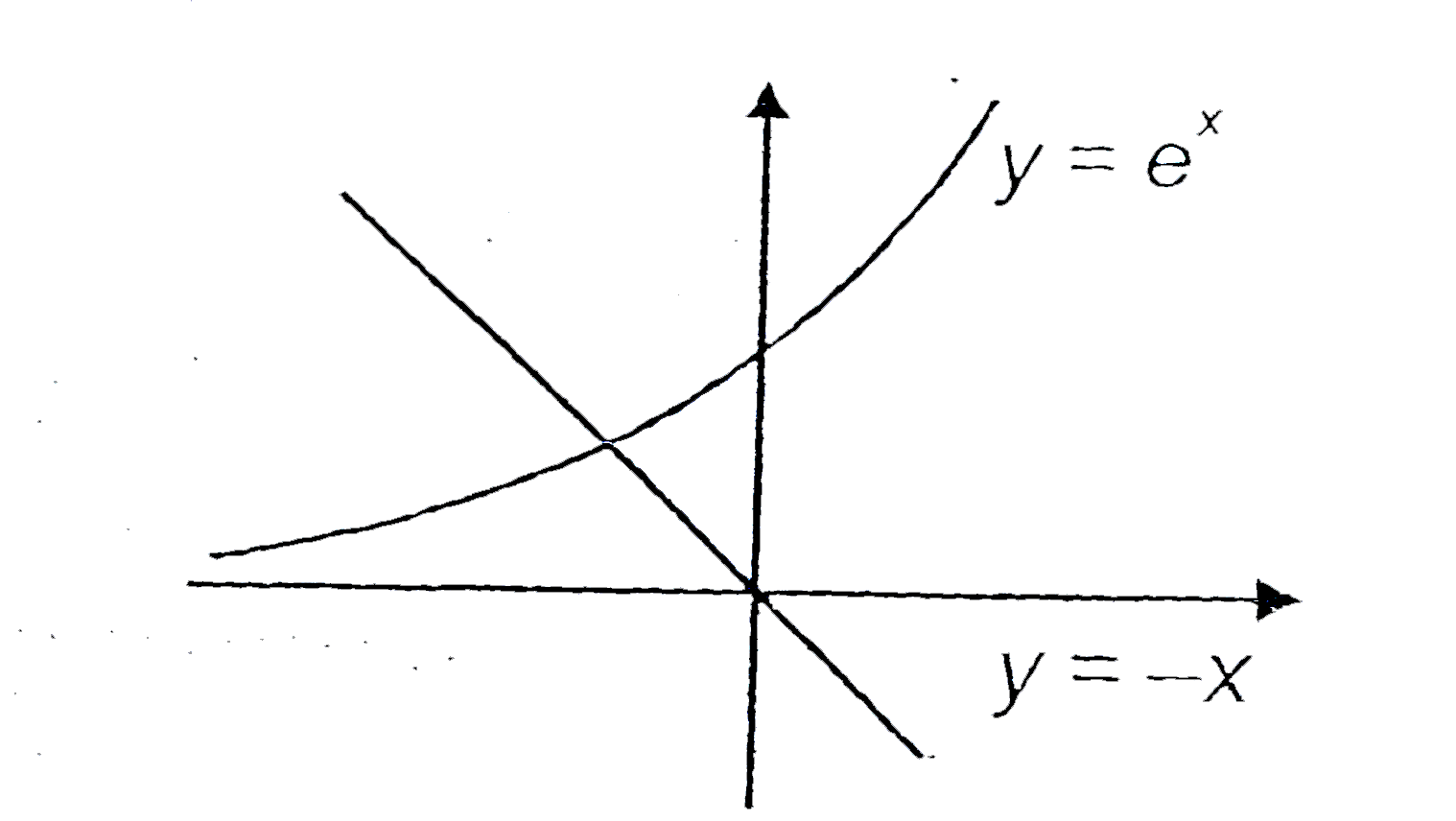If A= {(x,y) : y = ex,x∈R} and B = { (x,y) : y = e−x,x∈R } then n (A ∩ B ) is Solution in Tamil
infinity
0
1
2
The correct Answer is:C
Step by step video, text & image solution for If A= {(x,y) : y = e^(x), x in R } and B = { (x,y) : y = e^(-x), x in R } then n (A cap B ) is by Maths experts to help you in doubts & scoring excellent marks in Class 11 exams.
Topper's Solved these Questions
- BOOK - PREMIERS PUBLISHERSCHAPTER - SETS,RELATIONS AND FUNCATIONSEXERCISE - PROBLEMS FOR PRACTICE I. (Answer the following questions)10videos
SETS,RELATIONS AND FUNCATIONS
- BOOK - PREMIERS PUBLISHERSCHAPTER - SETS,RELATIONS AND FUNCATIONSEXERCISE - II. Choose the correct option for the following. (M.C.Q)35videos
SETS,RELATIONS AND FUNCATIONS
- BOOK - PREMIERS PUBLISHERSCHAPTER - SETS,RELATIONS AND FUNCATIONSEXERCISE - SOLUTION TO EXERCISE 1.48videos
SETS,RELATIONS AND FUNCATIONS
- BOOK - PREMIERS PUBLISHERSCHAPTER - MATRICES AND DETERMINANTSEXERCISE - PROBLEMS FOR PRACTICE .(II CHOOSE THE CORRECT OPTION FROM THE FOLLOWING)46videos
MATRICES AND DETERMINANTS
- BOOK - PREMIERS PUBLISHERSCHAPTER - TRIGONOMETRYEXERCISE - CHOOSE THE CORRECT ANSWER62videos
TRIGONOMETRY
Similar Questions
If A and B are two sets so that n(B−A)=3n(A−B)=9n(A∩B) and if n(A∪B)=26, find n(p(A)).
03:01View SolutionIf f:R→R is defined by f(x) = 3x - 4 is bijective, its inverse f−1(x) is:
01:40View SolutionFor the curve y = x3 given in figure draw,
y = -x302:37View SolutionIf aij=i2−j and A=(aij)2×2is:
06:01View Solution1cos80o−√3sin80o =
06:57View SolutionIf A={(x,y):y=e^(x),x in R} and B={(x,y):y=e^(-2x),x in R}, then
01:27View SolutionIf A={(x, y):y=ex, x∈R}and B={(x,y):y=x,x∈R} , then write A∩B.
03:47View SolutionIn some question of sets, we have to make the use of graphs
For example
A={(x,y):y=ex,x∈R}
B={{x,y}:y=−x.x∈R}
Find n(A∩B)

It is clear that y=exandy=−x intersect at one pont. Hence n(A∩B)=1
A:{(x,y):y=√4−x2,x∈[−2,2]}
B={(x,y):y=|x|,x∈R}
Then n(A∩B)02:45View SolutionIn some question of sets, we have to make the use of graphs
For example
A={(x,y):y=ex,x∈R}
B={{x,y}:y=−x.x∈R}
Find n(A∩B)

It is clear that y=exandy=−x intersect at one pont. Hence n(A∩B)=1
A={(x,y):x2+y2≤2,x,y∈R}
B={{x,y):y≥x2,x,y∈R}
Then domain of A∩B is03:07View SolutionIn some question of sets, we have to make the use of graphs
For example
A={(x,y):y=ex,x∈R}
B={{x,y}:y=−x.x∈R}
Find n(A∩B)

It is clear that y=exandy=−x intersect at one pont. Hence n(A∩B)=1
A={(x,y):y=sinπx,x∈R}
B={(x,y):y=|In|x||,x∈R−{0}}
Then, n(A∩B)03:08View SolutionLet A={(x,y):y=ex,x∈R}B={(x,y),Y=e−x,x∈R}then
04:08View SolutionIf A= {(x,y) : y = ex,x∈R} and B = { (x,y) : y = e−x,x∈R } then n (A ∩ B ) is
01:07View SolutionA={(x,y):y:y=ex,x∈R},B={(x,y):y=e−x,x∈R} then
00:59View SolutionA={(x,y):y=ex,x∈R},B={(x,y):y=x,x∈R} then
03:50View SolutionLet A={(x,y)∣y=ex,x∈R}andB={(x,y)∣=e−x,x∈R}. Then
02:22View SolutionIf A ={(x,y):y=ex,xεR} and B={(x,y):y=e−x,xεR) then n(A∩B) is _________
01:19View Solution

